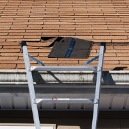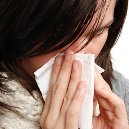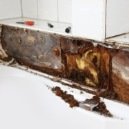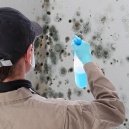Find a pre-screened local mold removal specialist Free Estimate
Find a Mold Specialist Now
Click or Call, Toll-Free 24/7
Dog Mold Allergy Treatment
Did you know that dog mold allergy is a common illness among pet dogs? Mold allergies in dogs can make your pet miserable, just like allergies can make you miserable. Dogs can be exposed to mold when there is mold in the home, and because they are smaller than people, mold can make them sicker than it makes people living in the same home. Dogs explore the world with their noses, sniffing everything, so they may be more likely than people to inhale mold, which increases their risk of mold-related allergy symptoms.
Signs and Symptoms of Dog Mold Allergy
Some of the common symptoms of mold allergies in dogs are different than the symptoms of mold allergies in humans. Common signs and symptoms of dog allergies to mold include:
Frequent scratching, licking and/or biting themselves (dogs may lose hair or develop sores on their skin from scratching, licking and/or biting themselves so much)
- Coughing
- Sneezing
- Wheezing
- Labored breathing (your dog’s chest may seem to heave with each breath)
- Watery eyes
- Frequent ear infections
- Loss of appetite
- Lethargy
You probably know when your dog is not acting like himself. If you notice changes in his behavior, appetite, or energy level, make an appointment with your vet.
Diagnosing Dog Allergies to Mold
If you take your dog to the vet with symptoms of a mold allergy, your vet will perform a thorough physical examination and also take a complete history from you. Your vet may do some blood tests and/or skin tests to help diagnose the problem.
Make sure to let your vet know if you think your dog may have been exposed to mold. If you’re not sure if there is mold in your home, you can have a professional come in to test for the presence of mold. A professional can also identify the type of mold in your home, which may help your vet prescribe the appropriate treatment. To find certified professionals that can test your home for mold, follow the link. Don’t delay taking your dog to the vet while you wait to get your home tested for mold, though. If your dog seems sick, he needs to see a vet right away.
Here is information on the symptoms of mold exposure in people. Having mold in your home can be very dangerous for people just like your pets.
Treating a Dog Mold Allergy
Your vet may prescribe medications to treat your dog’s symptoms and help him breathe more easily. He may need ear drops if he has an ear infection, and if he has sores on his skin that have become infected, he will need antibiotics.
In addition to treating your dog’s symptoms and any infections, your vet will most likely recommend having the mold removed from your home as soon as possible. If your dog continues to be exposed to mold, his symptoms may not improve and may even get worse, even with treatment. Depending on the severity of your dog’s symptoms, his size, age, and general health, your vet may recommend not taking him home until you have the mold removed.
For Help with Mold Removal
If your dog is allergic to mold, it’s important to remove all mold from your home to prevent your dog from getting sicker and sicker. Some homeowners prefer to tackle a household mold removal job themselves while others prefer to hire a professional. We recommend everyone consult with a mold removal professional, even if you plan to do the work yourself, because everyone can benefit from some expert advice. Most professionals offer free in-home consultations, so you have nothing to lose. For a list of mold removal professionals offering free in-home consultations in your area, follow the link.
Free Home Inspection By A Mold Removal Specialist
Search This Website

Recent Articles
-
See Our 5 Recommended Mold Removal Companies in Covington, KY
Apr 16, 25 12:59 PM
-
See Our 5 Recommended Mold Removal Companies in Wheaton, IL
Jun 20, 24 10:33 AM
-
See Our 5 Recommended Mold Removal Companies in Aberdeen, SD
Oct 08, 21 04:05 PM





